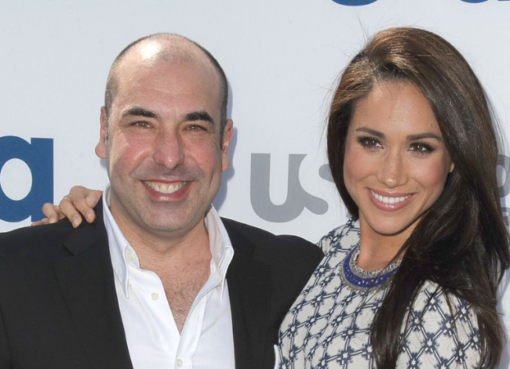Connection Request on Social Media: Best Practices for Building Meaningful Networks

In the digital age, a connection request on social media can be the first step toward building meaningful professional and personal relationships. Whether you’re networking on LinkedIn or expanding your reach on Facebook, how you approach these requests can significantly impact your online presence. Knowing when and how to send a connection request is essential for anyone looking to cultivate valuable relationships, establish credibility, and grow their brand. This guide delves into the best strategies for sending connection requests, ensuring that each interaction fosters trust and creates opportunities.
The Importance of a Thoughtful Connection Request on Social Media
When sending a connection request on social media, first impressions matter. A generic or impersonal request can often be ignored or, worse, result in a declined connection. Social media platforms are filled with requests from strangers, and many users are selective about who they add to their network. Personalizing each connection request shows that you’re serious about building a genuine relationship and that you’ve taken the time to understand the person’s profile or work.
Moreover, a thoughtful connection request helps establish credibility. If you’re expanding your professional network on platforms like LinkedIn, your connection request is not just about adding a name to your contact list. It’s a way to demonstrate your interest in that person’s industry, skills, or background. By addressing shared interests or common goals, you create a reason for the person to accept your request, which can lead to meaningful exchanges in the future.
Crafting an Effective Connection Request Message
Sending a connection request on social media with a personalized message increases the chances of acceptance. When crafting your message, be concise but make it personal. Mention why you’re interested in connecting—perhaps you share a mutual connection, attended the same event, or admire their work. This attention to detail will set your request apart from others.
It’s important to avoid sending connection requests with overly generic messages, such as “I’d like to connect.” This lacks substance and offers no clear reason for the connection. Instead, mention something specific, like a recent post or project they’ve worked on. This not only grabs their attention but also fosters a sense of mutual respect. For instance,
if you’re connecting with someone you admire in your industry, a message like, “Hi [Name], I recently read your article on [topic] and found it insightful. I would love to connect and follow your future work,” can be much more effective. Crafting an effective message shows that you value their contribution and are interested in a meaningful interaction.
Best Practices for Sending Connection Requests on Different Social Media Platforms
Not all social media connection requests are created equal. Each platform has its own etiquette and user expectations. Understanding these nuances can greatly increase your chances of forming a successful connection.
LinkedIn is the most professional platform for sending connection requests. Here, your request should always be accompanied by a message, especially if you’re reaching out to someone you haven’t met in person. Introduce yourself, explain why you’d like to connect, and highlight how you might benefit from each other’s network. LinkedIn allows you to personalize connection requests by referencing shared work experiences, mutual connections, or specific interests related to the industry.
Facebook and Instagram
On more casual platforms like Facebook or Instagram, connection requests should be approached differently. These platforms focus more on personal relationships and shared interests. On Facebook, you might send a friend request after meeting someone at an event, while on Instagram, following someone’s account and engaging with their content may suffice before sending a direct connection request. It’s key to ensure that your request feels natural and relevant to the person you’re trying to connect with.
Understanding the Etiquette of Connection Requests on Social Media
Sending a connection request on social media isn’t just about numbers; it’s about building a network that’s authentic and relevant. To do this, it’s essential to understand the etiquette of online networking.
Avoid Spamming
The worst mistake you can make when sending a connection request is spamming multiple users with the same message. Not only can this be flagged by some platforms, but it also reduces your chances of establishing genuine relationships. Always take the time to personalize each message based on the profile you’re connecting with, even if it takes longer. A thoughtful approach yields better results and ensures a higher acceptance rate.
Respect Boundaries
Respect personal boundaries when sending connection requests, especially on platforms that blend personal and professional lives, like Facebook. If someone declines your connection request, it’s best to move on rather than attempting to send multiple follow-up requests. Building a network is about creating trust, not forcing connections. Be mindful of privacy and avoid being too aggressive in your efforts to expand your online presence.
The Benefits of Accepting Connection Requests on Social Media
While much attention is given to sending the perfect connection request on social media, knowing when to accept a connection request is equally important. Accepting requests from the right people can offer a wealth of opportunities for collaboration, information sharing, and personal growth.
Expanding Your Network
By accepting connection requests, especially from individuals within your industry or related fields, you can expand your network significantly. A larger network increases the chances of discovering new opportunities, partnerships, or even job prospects. It’s also a way to gain access to a broader range of perspectives, which can be valuable in professional growth.
Gaining Credibility
Accepting connection requests from credible sources adds legitimacy to your online profile. When others see that you’re connected with respected individuals in your industry, it boosts your own credibility. Additionally, engaging with new connections’ content and participating in relevant discussions helps solidify your presence as an active and influential member of the online community.
Conclusion
Mastering the art of the connection request on social media is a crucial skill for anyone looking to build a robust online network. Whether you’re expanding your professional contacts on LinkedIn or growing a personal following on Instagram, taking the time to craft thoughtful, personalized connection requests can set you apart. Understanding platform-specific etiquette, avoiding spammy practices, and building relationships on trust are key elements in growing a meaningful network. As you navigate the world of social media, remember that every connection is an opportunity to grow, learn, and collaborate.
Frequently Asked Questions (FAQs)
- What should I include in a connection request on LinkedIn?
Always personalize the message by introducing yourself, stating how you know the person, and explaining why you’d like to connect. - Is it okay to send a connection request without a message?
On some platforms like Instagram or Facebook, it’s more acceptable. However, on professional networks like LinkedIn, a message significantly improves your chances of a successful connection. - Can I send a connection request to someone I don’t know personally?
Yes, but it’s important to mention why you are reaching out. Perhaps you share mutual interests, work in the same industry, or were inspired by their content. - How many connection requests can I send at once?
While most platforms have no hard limits, it’s best to avoid sending too many at once. Prioritize quality over quantity to prevent your requests from being flagged as spam. - Should I accept all connection requests I receive?
No, you should evaluate each request and accept only those that align with your goals or interests. Quality is more important than quantity. - What if my connection request is ignored or declined?
If a request is declined or ignored, move on gracefully. Avoid sending repeated requests to the same person. - How do I reject a connection request politely?
If you don’t want to connect with someone, simply decline the request. On LinkedIn, you can also choose to archive it without notifying the sender. - Can I delete a connection once I’ve accepted it?
Yes, on most platforms, you can remove a connection if it no longer serves a purpose or if you feel uncomfortable. - How do I know if my connection request has been accepted?
Most platforms will notify you when someone accepts your connection request. - Can sending too many connection requests hurt my profile?
Yes, if your requests are frequently ignored or declined, some platforms may restrict your ability to send more, and it could also affect your online reputation.




Leave a Comment